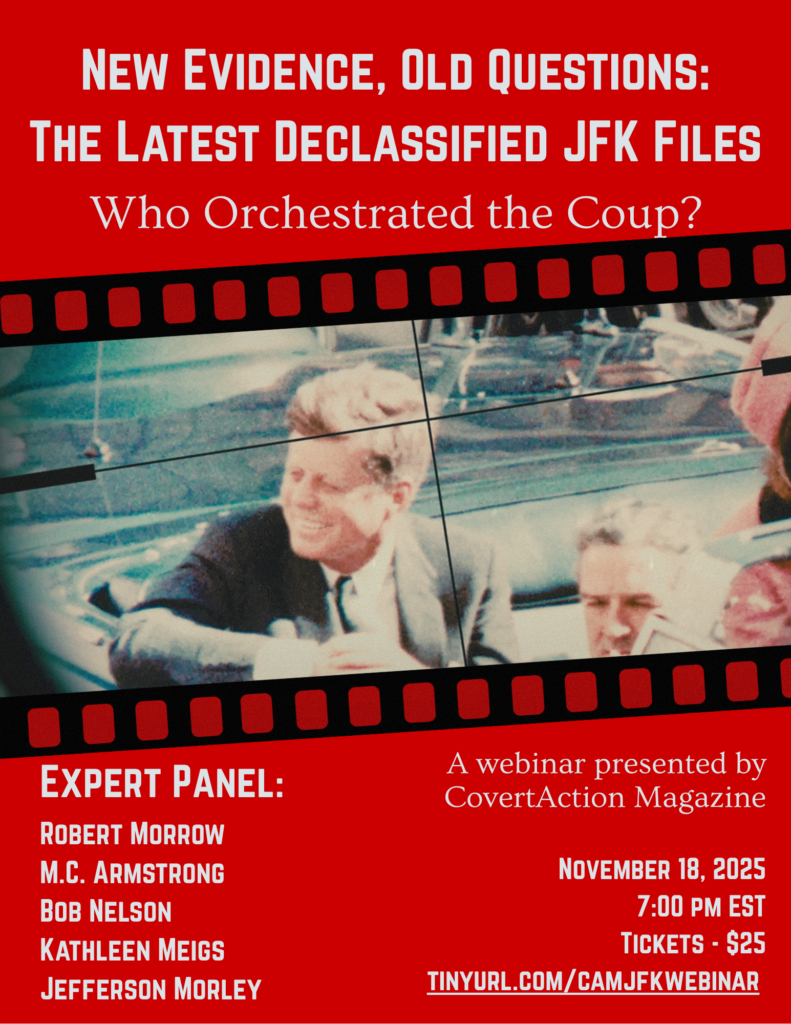
[This article is part of a series this week on the JFK assassination coinciding with our November 18 webinar entitled “New Evidence, Old Questions: The Latest Declassified JFK Files.” Part 1 can be found here.—Editors]
Part 2: When and Why Did Mossad Recruit Nazi Colonel Otto Skorzeny?
“Somebody put it together very masterfully….Whoever was the architect of this thing….they flooded this area with so many characters with nefarious reputations because they thought, ‘Well, if all these people get scooped up it’ll muddy the waters so much that they’ll never straighten it out.’”
—Chauncey Holt, national crime syndicate operative regarding Dallas, 1963
From the evidence provided by Ralph Ganis and Hank Albarelli, Jr., we know that Otto Skorzeny in 1963 was adjacent to everything surrounding the planning and executing of the assassination of President John Kennedy. We know that Wolfgang Lotz was in Paris in August 1962 discussing with his handlers his role in Operation Damocles and that German missile scientist Heinz Krug was kidnapped in Munich in September 1962.
For some reason, in 1989, Israel’s intelligence magazine Matara published (in Hebrew) an article identifying former Waffen-SS colonel and expert on “up-to-date information on organizing the perfect coup d’état” Otto Skorzeny as working for Mossad in 1963. The shocking article was immediately discussed in Yedioth Ahronoth, The Jerusalem Post, and the London Guardian.

Catherine Gerson, in Yedioth Ahronoth on September 21, 1989, confirmed that Skorzeny was recruited by the Mossad in 1963 according to “a senior Mossad agent.” “A high-level decision was taken to employ Skorzeny” to help “Israel end the collaboration of Nazi scientists with Egypt.”
Here briefly is Gerson’s version of Skorzeny’s recruitment: Two Mossad agents posing as NATO officers arrived at his Madrid home and “persuaded Skorzeny to convince the Nazis working for Egypt to abandon their projects.”
Then “Skorzeny summoned to Spain an [unnamed] former soldier of his command then working in Egypt” and duped him into believing he was working for NATO in providing information on the German scientists. The (unnamed) “senior Mossad agent” emphasized, “Skorzeny never worked in the Mossad, but he was certainly our agent.”
Comment: Was Skorzeny or his former soldier really needed or used for this job? Krug was killed at least six months before then. Who recruited him: Mossad Director Isser Harel in 1962 or early 1963 or new Mossad Director Meir Amit in spring 1963?
The Jerusalem Post published essentially the same story under the headline “Ex-SS Man Worked for Mossad against Egyptian Rocket Project.”
The Guardian’s Ian Black covered the startling revelation as “Israelis Recruited SS Colonel as Agent.” Black described “the bizarre recruitment” of a former Nazi commando who had been “overseen” by Yitzhak Shamir, senior Mossad officer in Paris.
Again, Skorzeny was recruited in 1963 in Madrid. Black introduces Wolfgang Lotz, “a German officer” working as a Mossad spy, who sent threatening letters to German scientists from Cairo.
In Black’s report on the Matara article, the German officer, who visited Skorzeny and the NATO officers in Spain, was one of “several ex-Nazis” recruited by Skorzeny who provided “valuable intelligence about Nasser’s new weapons system.”
Comment: Shamir was prime minister of Israel in 1989 so, surely, he approved the article naming him head of Operation Damocles and overseer of Skorzeny in 1963. Who was the “German officer” who sent the threatening letters? Possibly Lotz? Was he ever a German officer?

In early 1963 we know there were two foiled assaults on scientists involving true or fake defector Otto Joklik. Was Joklik, an Austrian engineer and perhaps an Israeli agent, once under Skorzeny’s command? Just what did Skorzeny do for Israel that was so important that Harel decided not to hunt him for war crimes?
Muddying the Skorzeny Waters
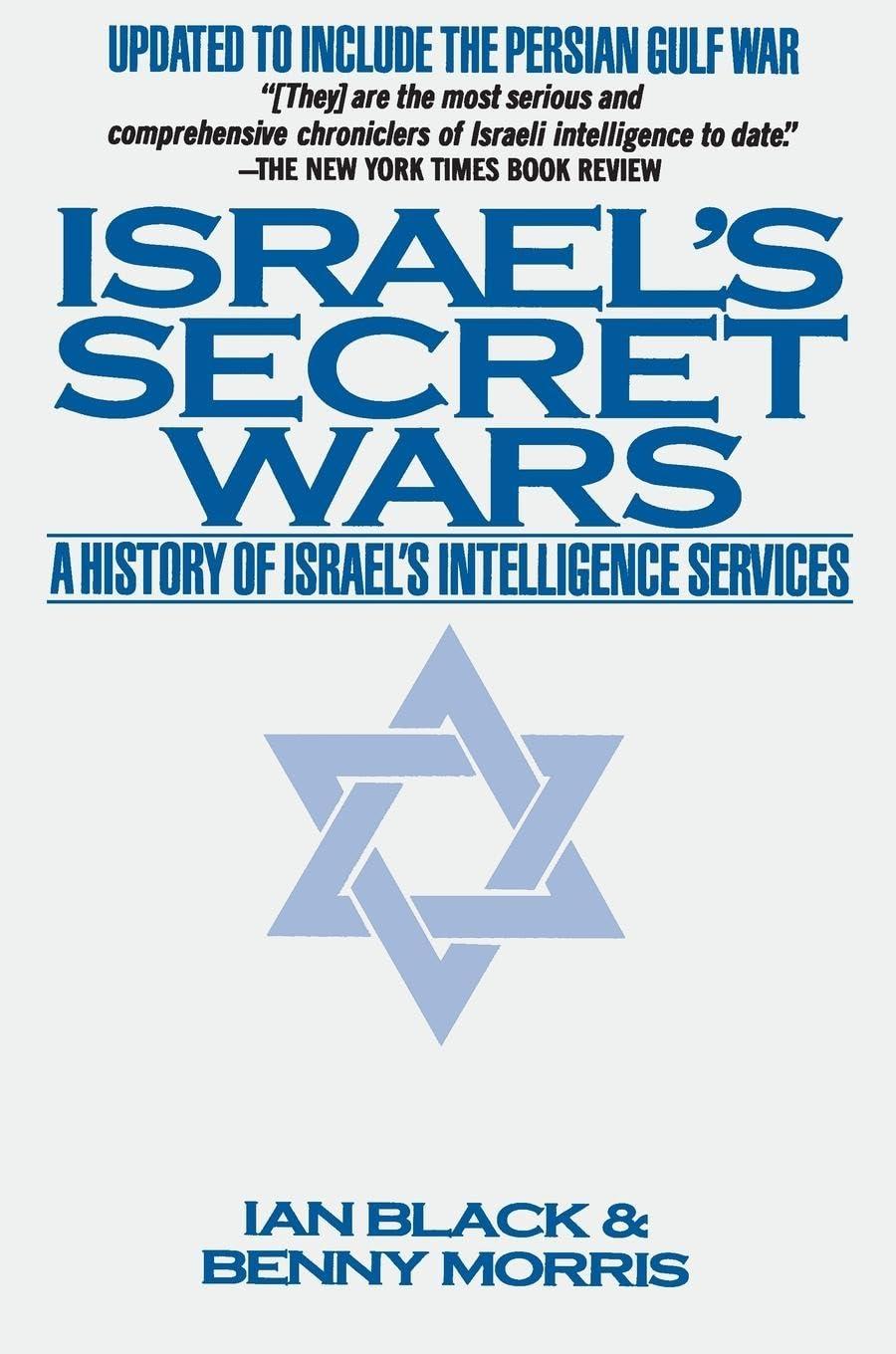
Two years later, in 1991, Ian Black elaborated on the story of Skorzeny’s recruitment in a book co-authored with Benny Morris, Israel’s Secret Wars: A History of Israel’s Intelligence Services (New York: Grove Press, 1991). At the outset, the authors warn, “We have been handicapped by the irritating but unavoidable fact that whatever we wrote would ultimately have to pass through the sieve of Israeli military censorship.” And “some of those whose assistance was priceless still cannot be publicly thanked, [an] unfortunate occupational hazard of being involved in, and writing about, intelligence.”
They confirm much from previous accounts but add new and intriguing ramifications: “Skorzeny was living in Spain when he was approached by Mossad agents early in 1963. It is unclear whether the former Nazi knew he was dealing with Israelis” and “When one of Skorzeny’s [not identified] old comrades, who was working on the rocket project in Egypt, came to visit him, the German scientist met two Israelis masquerading as ‘NATO officials.’”
In this version, the sending of the threatening letters is said to have been done by Wolfgang Lotz, now called “an Israeli spy,” not a former German SS officer. He is not a scientist but an entrepreneur. They write: “In August 1962, shortly after the unveiling of the new [Egyptian] rockets at the Revolution Day parade, Lotz flew to Paris to meet his controller, ‘Yosef’ and was ordered to find out more about the weapons project.”
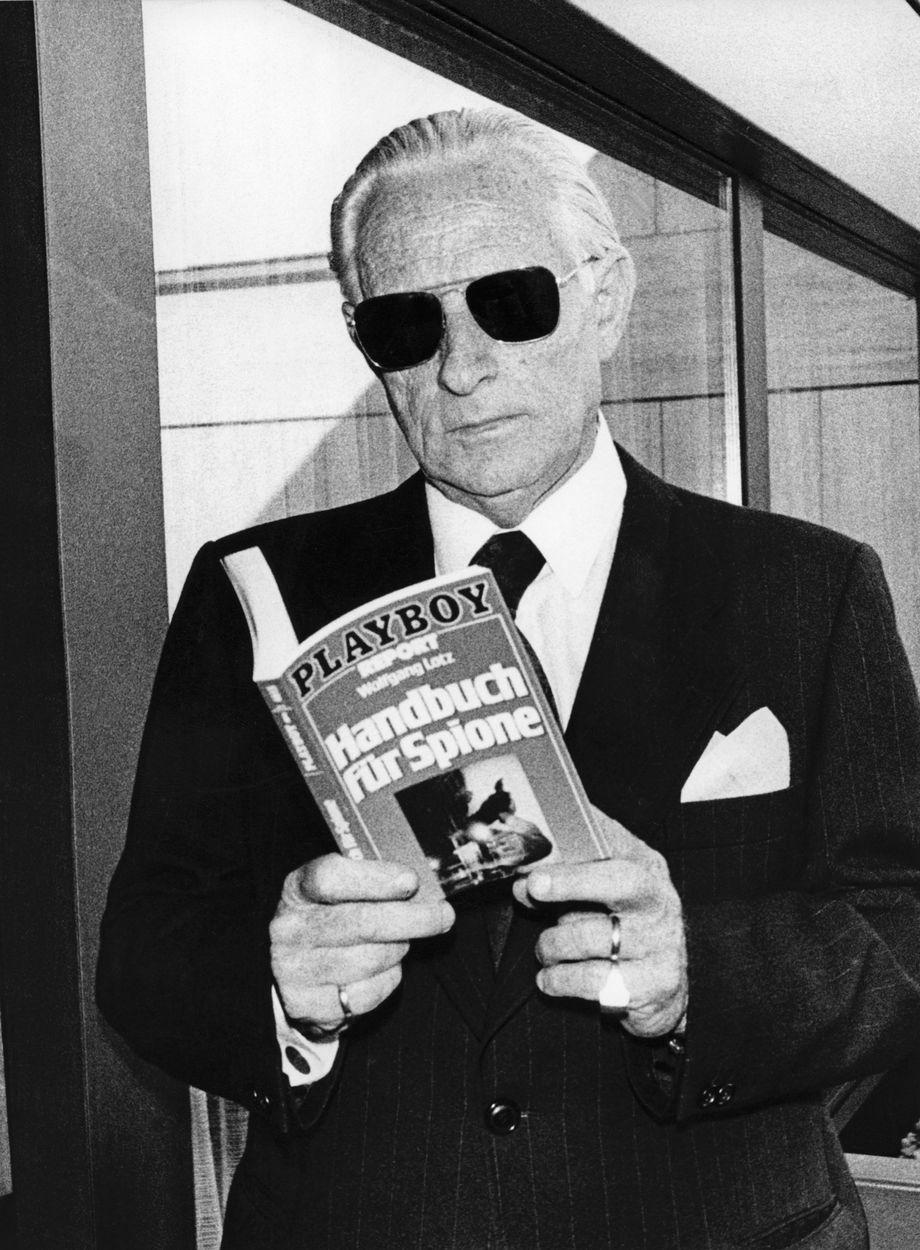
In this account, the head of Operation Damocles in Europe was not Shamir but someone called Joe Ra’anan (born Yosef Reisman). Shamir had “helped” Harel in assassinations in the past, and now Shamir brought in Herzl Amikam. The implication is that Joe Ra’anan, Shamir, and Amikam were behind the murder of Heinz Krug in September 1962.
In October, Harel met with Ra’anan in Europe. The next month, November 1962, deadly parcel bombs were sent to project director Pilz. In February 1963 scientist Hans Kleinwachter was supposed to be killed by Mossad hitmen sent by Shamir and Harel, but the attempt failed. The authors say that, after this failure, threatening letters were sent by Lotz to other scientists.
Then, in March 1963, two men were arrested in Switzerland after accosting and threatening the daughter of Paul-Jens Goerke, a missile guidance expert who was working at Factory 333 in Egypt. One of the men was Otto Joklik, an Austrian engineer, who had worked for the Egyptians but “defected,” and the other was Yosef (Joseph) Ben-Gal, an Israeli who said he worked for the education ministry.
Joklik testified at their trial that he quit his job for Egypt when he learned Egypt had acquired large amounts of strontium 90 and cobalt 60 and “realized they were planning Israel’s annihilation.” At this point, “the affair of the German scientists exploded publicly in March 1963.” Israelis became hysterical at hearing these claims. Rockets were bad enough. Nuclear warheads were too much.
The authors state that the Goerke assault was a Harel operation headed by Ra’anan. Mossad chief Meir Amit called Joklik a charlatan. Harel was incensed that Amit whitewashed the German scientists’ problem and resigned as Mossad director, which was accepted by Prime Minister Ben-Gurion. The employees were “weeping” when Harel resigned, and Shamir and Ra’anan quit too. Amit took over Mossad and replaced Ra’anan with Rafi Eitan in Paris.
Amit, the survivor of an epic power struggle within Israeli intelligence, gets the last word. (An official “likened [Harel and Amit’s] rivalry to the biblical struggle of Gog and Magog—a titanic battle between two powerful forces.”)

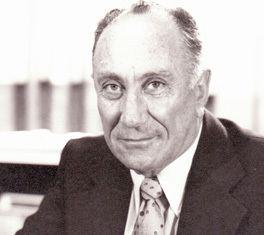

Comment: There is much to absorb here. We are dealing with three Yosefs: Yariv, Ra’anan, and Ben-Gal. Herzl Amikam was a member of the Stern gang under Shamir. His official biography says, “In 1956, he was recruited by the security services and served until 1972 in France or South Africa.” The narrative here contradicts the three 1989 stories in which Skorzeny clearly knew he was dealing with Mossad. “Early in 1963” implies Skorzeny could have been involved in the Shamir-Joklik assaults on scientists in early 1963, but he would not have had anything to do with Krug’s disappearance in 1962. The two assaults in early 1963 were failures, so what was so helpful that Skorzeny did?
The “old comrade” here is a rocket scientist. Could he be Austrian engineer Joklik? The Israeli “NATO officials” here meet with Skorzeny’s “old comrade” in Madrid. Are these the same agents who first met Skorzeny? Why do the Mossad agents need to meet with the “comrade,” if Skorzeny just took care of it? Lotz here assumes the role of the German officer or old comrade rocket scientist as far as providing the information on the scientists and sending threatening letters and bombs, as admitted in Lotz’s 1970 memoir, The Champagne Spy.
Did Lotz or Joklik go to Madrid? Black and Morris are damning regarding Lotz: He was getting orders from “Yosef” in Paris in August 1962. This date differs from Lotz’s memoirs and other biographical material but makes sense overall. Did Lotz move from Aman to Mossad to be part of Operation Damocles? Did his handler shift from Yosef Yariv to Yosef Ra’anan?
Skorzeny’s “German officer”/scientist was supposed to be gathering information in early 1963, but Lotz wrote in his memoir that he obtained all the information on the scientists by July 1962. Were Lotz, Joklik and Skorzeny acquainted in Egypt? Was Lotz a Skorzeny “contact” in 1963? Did Skorzeny know Lotz was an Israeli agent as well as a German agent?
Harel met Ra’anan in Europe right after the 1962 Krug murder, but there is no mention of Joklik, though he was implicated in two subsequent assaults on scientists. If Ra’anan was “running” Skorzeny, what was Skorzeny’s role in the 1963 Goerke confrontation with Joklik, versus the attempted bombing assassination attempts of Pilz in 1962 and Kleinwachter in February 1963, not to mention the actual assassination of Krug in 1962?
Why was Skorzeny needed for missile information, if Lotz was getting it? Why was missile information not mentioned in 1989, if Skorzeny was recruited to get personal information for a threatening letter campaign? Getting caught threatening Goerke was said to have exposed and ended the terrorist Operation Damocles in March 1963.
According to Black and Morris, Ra’anan “ran” Skorzeny before March 1963, and Eitan ran him after March 1963, if he replaced Ra’anan in March or April 1963. What happened to Shamir and Yaviv?
Krug Is the Crux
In early July 1992 Yossi Melman reported for Ha’aretz (and AP and Reuters reported it in the Los Angeles Times and elsewhere) that Heinz Krug may have been killed by Mossad agents run by “defeated prime minister” Yitzhak Shamir. “In the story by author Yossi Melman, the newspaper said Shamir—based in Paris—sent a team on two failed attempts to kill an ex-Nazi rocket scientist” (Pilz and Kleinwachter).
Comment: If Shamir was in Paris, and Lotz was shifted from Aman to Mossad, he would have met with Shamir and Ra’anan instead of, or in addition to, Yariv. It does not mention Skorzeny as involved in any of these attacks nor is Joklik and the assault on Heidi Goerke.
Who Really Was Joklik?
In 1996, academic George Lavy published his dissertation, Germany and Israel: Moral Debt and National Interest (London: Frank Cass, 1996). He provides some interesting background on West German–Israeli relations during the Cold War before mentioning the murder of Krug.
West Germany under Chancellor Konrad Adenauer recognized and supported Israel, including providing it monetary restitution for losses of the Holocaust. There was an understanding that Germany would have a “perpetual obligation to sustain the survival” of Israel.
Adenauer also supported Israel’s quest for a nuclear weapon through a secret plan called Operation Business Friend. Lavy claims that West Germany finally got the German nuclear scientists back from Egypt by financial inducements and moral persuasion, not through threats or terrorist attacks.
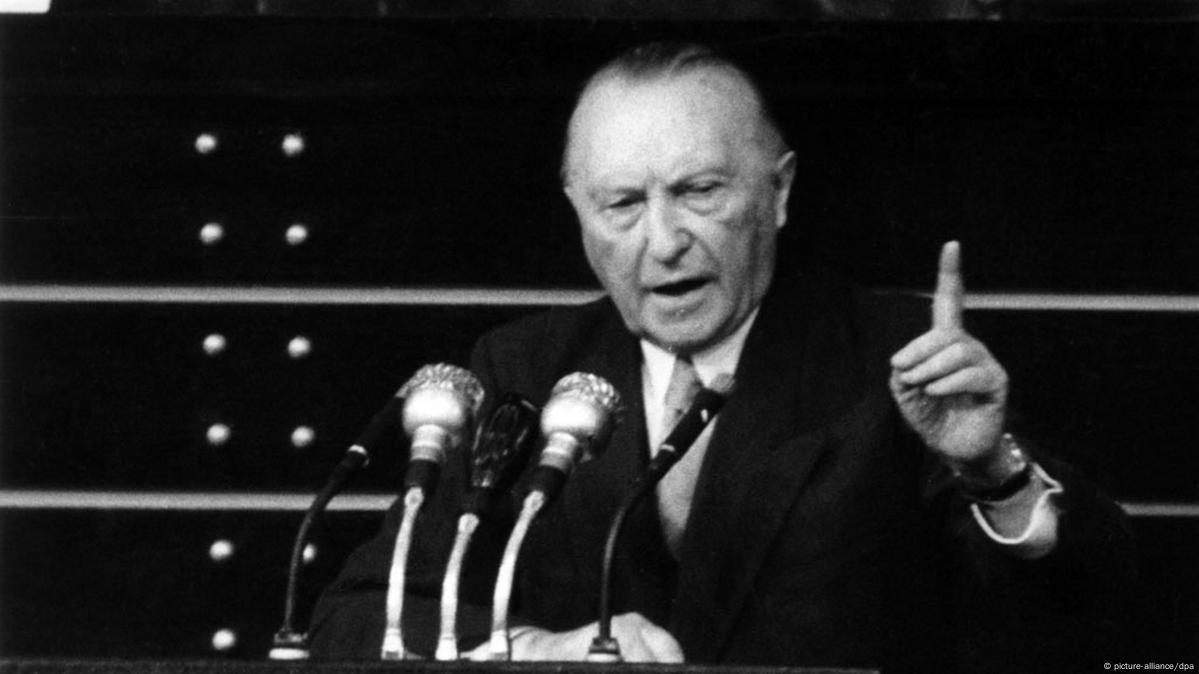
Lavy expands in a provocative way on Black and Morris’s factual description that Joklik and Ben-Gal were arrested for accosting Goerke’s daughter in March 1963. He claims that the pair also abducted Krug in September 1962. Lavy writes that Joklik stated under oath that he was contacted by Israeli agents in early 1962 and put in contact with Ben-Gal. Ben-Gal testified he was working for the Ministry of Education in Israel until October 1962 and was never a “secret agent.”
Comment: This is the first claim that Joklik was involved in the abduction of Krug in September 1962, surprising given that Joklik turned himself into the Israeli embassy in Vienna with atomic weapons concerns in October 1962. If Joklik did state under oath that he was contacted by Israeli agents in early 1962, and if he was telling the truth, it means he was an Israeli asset or agent even before Operation Damocles. Further, if Joklik and Ben-Gal were in contact in early 1962, it is conceivable that they might have been involved in the Krug murder.
Perhaps, however, Joklik might have been contacted for another purpose. Rafi Eitan says that Joklik was first identified through an expensive letter-opening machine donated by U.S. organized crime CEO Meyer Lansky. Was the Austrian Joklik asked by Israel to contact Skorzeny in 1962 so that the Nazi colonel could help Israel in some way? Did Joklik know Skorzeny or someone who knew him? Harel, Mossad director in 1962, was satisfied with Joklik’s authenticity; Amit was not.
If Joklik was lying about being contacted by Israelis in early 1962, why was he lying? Harel and Amit’s conflict involved differing goals. Ben-Gurion and Amit’s goal was Israeli nuclear domination of Arab neighbors. Harel’s was getting rid of German rocket scientists in Egypt.
If Joklik was lying about being contacted by Israelis in early 1962, why was he lying? Was there conflict between Mossad spies (Joklik) and Aman spies (Lotz) in Egypt related to differing goals (capturing Nazis versus placating Germans and taking care of Kennedy)? Ben-Gurion and Amit’s goal was nuclear domination of Arab neighbors.
Harel’s objective was revenge and eradicating Nazism. Most historians credit Amit as being the more forward-looking of the two spy chiefs. Ben-Gal certainly lied about being an Israeli agent. It was eventually the case in 1964 that Israel and Germany persuaded a new batch of scientists to stay in Germany through peaceful means, but the original group that was attacked in Operation Damocles left by 1963.
In March 2004, the ubiquitous intelligence expert Yossi Melman wrote in Ha’aretz (“Targeted Killings: A Retro Fashion Very Much in Vogue”) that former Prime Minister Shamir had directed Operation Damocles, in which German rocket scientists working on the Egyptian missile program were targeted for assassination. He does not name the actual assassins.
It is clearly established that Operation Damocles was headed by Shamir (under Ra’anan) for Mossad. It is not clear who else was involved and who did the actual killing or attempted killings, other than that Lotz likely sent the parcel bombs to Pilz and the Egyptians and Joklik and Ben-Gal accosted Heidi Goerke. Amikam possibly killed Krug.
The Return of Wolfgang Lotz
Wolfgang Lotz’s middle-aged son, Oded Gur-Arie, was featured in Nadav Schirman’s 2007 film, The Champagne Spy, about the domestic side of Lotz’s espionage career. When Lotz returned to Israel from Egypt, he did not rejoin his Israeli family but remained with his German wife Waltraud, who became an Israeli citizen.
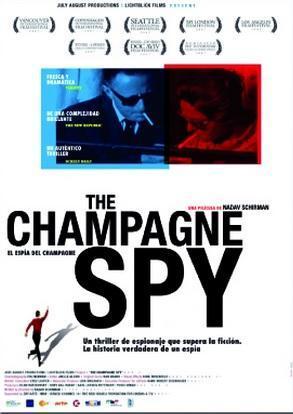
When she died, Lotz was disconsolate, and Oded comforted him. Eventually, though, Lotz (who never resumed his Israeli name of Ze’ev Gur-Arie) moved to Munich and got together with a German journalist, living with her until his death. The domestic details in the film are fascinating but, as Victor Marchetti, special assistant to the Deputy CIA Director, pointed out in the 1970s, exciting personal details are often used by intelligence to divert attention from inconvenient facts.
Some things are cleared up in the film: Lotz was indeed an Israeli, though born in Germany, and Rivka was indeed his wife and Oded his son. Lotz moved to Israel with his Jewish mother in 1948. When he joined Israeli military intelligence, he was often away from home. The family moved to Paris. His son did not know exactly what he did or where until 1962, when Lotz, in Paris, discussed his work in Egypt in front of him with an unnamed “Mossad handler” and impressed on him the need for secrecy.
Comment: Lotz had always previously been identified as an IDF spy, but in the film his handler in 1962 is said to be Mossad. For some reason he had been shifted from domestic to international work. Amit is interviewed for the film but Harel had already died. Lotz clearly had been moved to Damocles, as proved by his involvement in the Pilz bombing. Was he perhaps also used in the Krug abduction just after meeting his son in Paris? The film never mentions Krug.
Meidan Bombshell
In 2010, prominent Israeli historian Tom Segev dropped a bombshell when he wrote in his biography of the famed Nazi hunter, Simon Wiesenthal: The Life and Legends (New York: Doubleday, 2010), that, when Skorzeny was approached to work for Mossad, he demanded as payment having his name removed from Wiesenthal’s Nazi war-criminal list. Wiesenthal refused, but Skorzeny worked for them anyway. Was this an offer Skorzeny could not refuse? Segev does not say what Skorzeny was recruited to do.
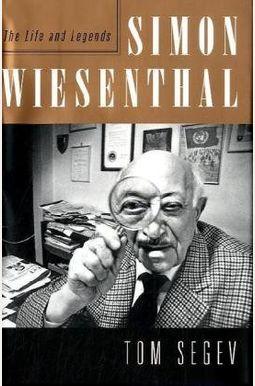
Segev gave his main source as senior Mossad agent Rafi Meidan (aka Raphi or Rafael Medan), who had an unpublished memoir. Segev’s brief report, based on Meidan’s memoir, eventually led to a flurry of stories attempting to make sense of both Meidan’s and Skorzeny’s roles (or lack of or later role) in Israeli intelligence operations.
Comment: This is the first mention of Skorzeny asking for payment for his work for Mossad. It is also the first mention of Rafi Meidan in relation to Skorzeny. Meidan, as will be recalled, was head of the Mossad’s Amal unit, which name referenced “Amalek, the tribe ordered by God in the biblical account to be wiped out for attacking the Israelites fleeing Egypt for the Promised Land.”
Amal is Harel’s group that captured Adolf Eichmann in Argentina in 1960 in coordination with Rafi Eitan and Peter Malkin, then of Shin Bet. In 1958 Meidan was under cover as assistant director of the Israeli press at the UN. The CIA’s JFK assassination files indicate that Meidan met in Washington, D.C., with Palestinian Israeli spy Omar Dajany, who then went to visit Jewish D.C. “policeman” Joseph Shimon’s house.
Shimon worked for the Department of Justice, the White House, and the Secret Service. He also worked for the CIA and, through them, the national crime syndicate. Shimon later said that the death of President Kennedy was the best thing that ever happened to the United States. He also hated the Bushes. According to former Mossad agent Victor Ostrovsky, another president the Zionists planned to assassinate was George H. W. Bush because he threatened to withdraw funding to Israel. That operation was leaked and called off.
On December 13, 2010, Newsweek carried an article by young journalist-historian Ronen Bergman called “Killing the Killers” about Operation Damocles, which began in July 1962. Bergman’s narrative is generally convincing. There is no mention of Skorzeny, Joklik, Meidan or Lotz.
Bergman in Newsweek confirmed that, in September 1962, Heinz Krug, head of Egyptian missile Factory 333 shell company Intra, vanished in Munich and that, in November 1962, two parcel bombs arrived at the Cairo offices of the missile project’s new director, Wolfgang Pilz, maiming his secretary and killing five Egyptian workers. In February 1963 another Factory 333 scientist, Hans Kleinwachter, narrowly escaped an ambush in Switzerland, and in April 1963, “two Mossad agents in Basel [unnamed here but Joklik and Ben-Gal] accosted Heidi Goerke, the daughter of project manager Paul Goerke, and threatened to kill both him and her.”
Bergman summed up, without providing the date or how obtained, that Israel finally shared their information on Factory 333 with the West German government, which agreed to pressure the scientists to leave Egypt by offering them good jobs in Germany. And that was the end of the problem of the German scientists in Egypt and Operation Damocles.
Comment: Bergman said that “Mossad agents” kidnapped Heidi Goecke in April 1963; however, they were arrested in early March 1963. This makes a difference regarding who was heading Mossad at the time. He also states that both the accused were Mossad agents, though both denied it. The success of the pressure technique in getting the first batch of German scientists to leave by the end of 1963 is not acknowledged.
Skorzeny’s disappearance from the German scientists’ narrative, along with his definite mention in Segev, as well as no mention of Meidan, is significant. It is as if Segev had not written what he did, and Skorzeny was not used in Damocles.
But was he? If Mossad and Shamir were competent to threaten and kill German scientists, and Lotz was able to provide information on the scientists and send them threatening letters and bombs, what was Skorzeny doing for Israel in 1963 or 1962, when he was involved in the planning of the De Gaulle and Kennedy assassination? President Kennedy, his Attorney General brother, his CIA director, and others were thwarting Ben-Gurion’s plans for developing an Israeli nuclear weapon. Could Skorzeny have been working on this aspect of Israel’s nuclear-security concern?
In 2013 historian Roger Howard published Operation Damocles: Israel’s Secret War against Hitler’s Scientists, 1951-1967 (New York: Pegasus Books, 2013), about the effort to get rid of the German scientists working for Egypt through harassment, intimidation and assassination between March 1962 and March 1963. It ended when Isser Harel was fired as Mossad head. Howard described a Skorzeny recruitment effort by Mossad some time in late 1962 to early 1963. Harel sent a fake NATO team (unidentified agents) with forged papers to Madrid, keeping it a secret from his IDF rival Meir Amit.
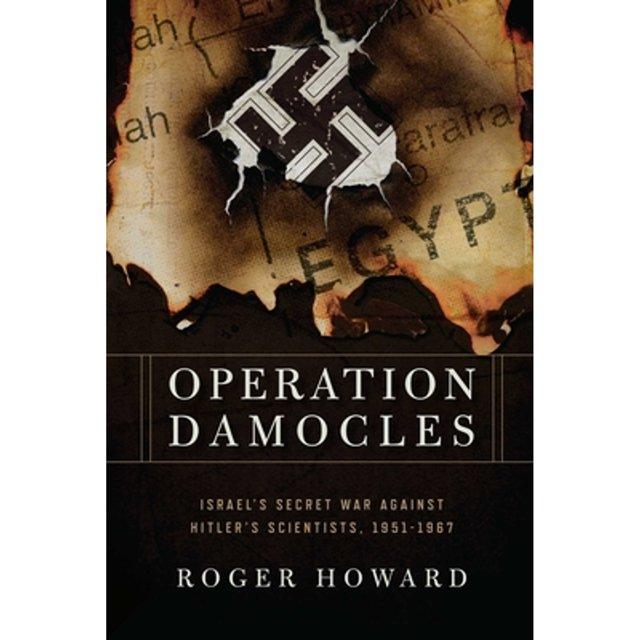
The “NATO” pair approached Skorzeny to try to get him to “pressure” the German scientists to leave (not to gain information about the scientists or the missile program), but Skorzeny refused because he did not want to be involved in anything to do with the scientists’ work. Howard wrote that, in general, Skorzeny did his work through subordinates. Regarding Skorzeny’s Nazi qualities, he wrote that Skorzeny, in the 1950s, recruited Franz Buensch, an expert on “Jewish atrocities,” to devise the plan to collect Nazis hiding in Argentina, Brazil, Ireland and Spain to build the Egyptian intelligence organization. [NOTE: Are you sure about the name “Franz Buensich”? I don’t have the book so I can’t check it.]
Comment: This is the only narrative in which Skorzeny is contacted by Mossad but refuses to work for them. Obviously, there is no mention of an “old comrade” or “subordinate.” This looks like an attempt by Howard to limit a limited hangout: Yes, it is true that Mossad, under Harel, did reach out to Skorzeny, but nothing happened. Meidan did not run him. Amit knew nothing about it. End of story.
Three years later, there was a blast of new “information” about Skorzeny being recruited by and working for Mossad in a very hands-on way. On March 27, 2016, Dan Raviv (a former CBS correspondent) and Yossi Melman (the prolific Israeli columnist) writing in the formerly Yiddish daily newspaper, but by then the English weekly, Forward, presented their version of what happened. (The story was published on the same date in Ha’aretz as “The Strange Case of a Nazi Who Became an Israeli Hitman” with the subheading “Otto Skorzeny, one of the Mossad’s most valuable assets, was a former lieutenant colonel in Nazi Germany’s Waffen-SS and one of Adolf Hitler’s favorites.”)
Unlike Bergman in 2010 or Howard in 2013, these reporters brazenly connected Skorzeny with the Mossad intimidation of the German scientists, starting with Krug’s kidnapping and presumed assassination in September 1962. The Raviv/Melman sources were anonymous, “deeply undercover,” former Mossad agents and people in the know.
This is, so far, the most detailed and dramatic account. It named names and provided quotes. It sounded like disinformation, and the authors even contended that the Israeli newspaper HaBoker published a knowingly false story that the Egyptians kidnapped Krug. But now they were going to truthfully report that Krug was killed as part of Israel’s Operation Damocles and that his literal shooter was none other than Skorzeny himself—“one of the Israeli spy agency’s most valuable assets.”
They wrote that Krug was near the top of the Mossad German scientist target list, and for several months before his death he had “received threatening messages.” Krug had worked with Wernher von Braun in Nazi Germany, and von Braun, a prominent figure in the U.S. space program after his recruitment under Operation Paperclip, offered him a job in the United States, but Krug chose Egypt because it paid better, and he saw it as an “opportunity to continue the ghastly mission of exterminating the Jewish people.”

Krug was feeling so disturbed by the threatening phone calls that he called on his “friend” Otto Skorzeny for help. “On the day he vanished, according to our new information from reliable sources, Krug left his office to meet Skorzeny, the man he felt would be his savior.”
According to this story, Krug and Skorzeny were in Krug’s Mercedes when Skorzeny announced that they were being followed in a car with three bodyguards who would join them in “a safe place in a forest for a chat.” Once there, Skorzeny, acting as an Israeli agent, shot and killed Krug. Skorzeny and the three “bodyguards” buried Krug’s body in the forest. The three bodyguards were identified as Yitzhak Shamir, head of the Mossad’s special operations unit; Zvi “Peter” Malkin, who had tackled Eichmann in Argentina; and Yosef “Joe” Ra’anan, the Mossad’s senior officer in Germany with a special focus on the German scientists in Egypt.
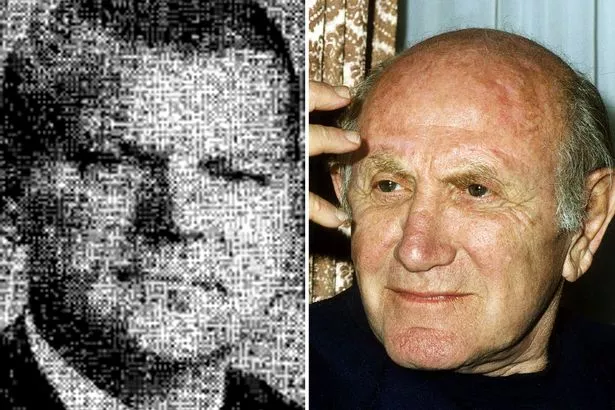
The authors cited several other Mossad operations in which Israel’s enemies were clandestinely liquidated. To accomplish such missions the Mossad sometimes had to “dance with the proverbial devil.” Skorzeny was a colonel in “the military arm of the Nazi Party and its genocidal plan.” They cited Skorzeny’s 1957 memoir, which was published in Israel, describing many of his commando exploits.
The authors attributed Skorzeny’s recruitment to murder Krug to a decision by Harel. Harel found Skorzeny “thorough and determined, with a record of success in executing innovative plans, and skilled at keeping secrets.” Skorzeny’s recruiter here was Joe Ra’anan (born Kurt Weisman in Vienna). Ra’anan’s mother and younger brother died in the Holocaust.
Ra’anan was said to have engaged in “pre-action intelligence” by spying on Skorzeny. His team included a German woman in her late twenties, who was not a normal Mossad agent but an attractive “saayanit posing as the girlfriend of an [unnamed] well-dressed forty-year-old undercover Mossad professional.”
The couple met Skorzeny and his wife Ilse (presumably in 1962) “by chance” in a Madrid bar and claimed to have been robbed. Ilse Skorzeny invited them to spend the night. “A sense of sexual intimacy between the two couples was in the air.” But before anything could happen, Skorzeny pulled a gun and declared: “I know who you are, and I know why you’re here. You are Mossad, and you’ve come to kill me.” To which the agent replied, “You are half-right. We are from Mossad, but if we had come to kill you, you would have been dead weeks ago.”
They said they came to make an offer (that he really could not refuse): Israel needed information and would pay him handsomely. Skorzeny replied that he only wanted Simon Wiesenthal to remove him from his list of war criminals because he had not committed any crimes. The Mossad agent agreed to the request. When Wiesenthal refused to remove Skorzeny from his list, the Mossad forged a letter saying that Wiesenthal had removed his name.
The story continued: “His Mossad handler, Ra’anan, secretly arranged a flight to Tel Aviv, where Skorzeny was introduced to Harel. The Nazi was questioned and also received more specific instructions and guidelines.” During this visit, Skorzeny was taken to Yad Vashem, the Holocaust memorial museum. There, a war survivor identified him by name as a war criminal: “Ra’anan, as skilled an actor as any spy must be, smiled at the Jewish man and softly said: ‘No, you’re mistaken. He’s a relative of mine and himself is a Holocaust survivor.’”
Skorzeny then went, as requested, to Egypt and “compiled a detailed list of German scientists and their addresses” and “the names of many front companies in Europe that were procuring and shipping components for Egypt’s military projects. These included Heinz Krug’s company, Intra, in Munich….Ra’anan assigned the task of staying in contact with Skorzeny to two of his most effective operatives: Rafi Eitan and Avraham Ahituv.”
During a later trip to Egypt (this would have been in November 1962 and the target, Pilz), Skorzeny personally mailed an Israeli-made bomb that killed five Egyptians in the military rocket site Factory 333. Although the intimidation campaign was quite successful and most of the Germans left Egypt, Prime Minister Ben-Gurion was upset because the operation interfered with Israel’s relations with West Germany regarding acquiring weapons. Harel was forced to resign, and his rival Amit was chosen to head Mossad. In January 1964, Amit, with input from Rafi Meidan, stopped focusing on hunting or intimidating Nazis.
The authors stated that “Amit did activate Skorzeny at least once more, however.” They said it was to arrange a meeting with a senior Egyptian official to discuss peace but “nothing ever came of it.”
The authors speculated on Skorzeny’s motives for working with Mossad. “Life insurance” naturally was his top priority. They added that he “had a very strong streak of adventurism.” When Skorzeny died in July 1975 he had funerals in Madrid and Vienna: “Both services were attended by dozens of German military veterans and wives, who did not hesitate to give the one-armed Nazi salute and sing some of Hitler’s favorite songs. Fourteen of Skorzeny’s medals, many featuring a boldly black swastika, were prominently paraded in the funeral processions.”
Joe Ra’anan attended the funeral service in Madrid on his own initiative, not as a former Mossad handler of Skorzeny.
Comment: This is a mishmash of fabrications, known facts, dramatic conversations, travel, and diverting exploits with a new timeline. Nazi Krug is no loss. Shamir and Ra’anan are implicated in Krug’s assassination as usual. Peter Malkin and Otto Skorzeny are now the killers. No mention of Amikam or Joklik and Ben-Gal. This is the first time that Ra’anan’s agents running Skorzeny (for Damocles) are named as Rafi Eitan and Avraham Ahituv (another Shin Bet operative, died in 2009).
Meidan here only shows up in 1964. Will the real recruiter of Skorzeny please stand up! Eitan and Meidan had previously been interviewed. Ra’anan died in 1996. He did not work in Germany, but was in charge of all of Europe. Did he “run” both Lotz and Skorzeny? Would a Holocaust survivor like Ra’anan really be chosen to recruit a Nazi war criminal? Skorzeny certainly worked through subordinates. This account tries to explain Wiesenthal and a 1962 recruitment of Skorzeny because of an indiscretion (or lie?) by Eitan regarding the year and his own part in recruitment.
This is the first narrative to mention Skorzeny also working for Amit, that is, some time after March 1963. In this narrative Skorzeny goes to Egypt and does all the things that we know Lotz did regarding finding personal and business information on the German scientists and sending a bomb. Is Lotz a cover to explain why Skorzeny was hired? Are deceased Harel, Ra’anan, and Ahituv, who hated Nazis, being set up as Skorzeny’s handlers?

CovertAction Magazine is made possible by subscriptions, orders and donations from readers like you.
Blow the Whistle on U.S. Imperialism
Click the whistle and donate
When you donate to CovertAction Magazine, you are supporting investigative journalism. Your contributions go directly to supporting the development, production, editing, and dissemination of the Magazine.
CovertAction Magazine does not receive corporate or government sponsorship. Yet, we hold a steadfast commitment to providing compensation for writers, editorial and technical support. Your support helps facilitate this compensation as well as increase the caliber of this work.
Please make a donation by clicking on the donate logo above and enter the amount and your credit or debit card information.
CovertAction Institute, Inc. (CAI) is a 501(c)(3) non-profit organization and your gift is tax-deductible for federal income purposes. CAI’s tax-exempt ID number is 87-2461683.
We sincerely thank you for your support.
Disclaimer: The contents of this article are the sole responsibility of the author(s). CovertAction Institute, Inc. (CAI), including its Board of Directors (BD), Editorial Board (EB), Advisory Board (AB), staff, volunteers and its projects (including CovertAction Magazine) are not responsible for any inaccurate or incorrect statement in this article. This article also does not necessarily represent the views the BD, the EB, the AB, staff, volunteers, or any members of its projects.
Differing viewpoints: CAM publishes articles with differing viewpoints in an effort to nurture vibrant debate and thoughtful critical analysis. Feel free to comment on the articles in the comment section and/or send your letters to the Editors, which we will publish in the Letters column.
Copyrighted Material: This web site may contain copyrighted material the use of which has not always been specifically authorized by the copyright owner. As a not-for-profit charitable organization incorporated in the State of New York, we are making such material available in an effort to advance the understanding of humanity’s problems and hopefully to help find solutions for those problems. We believe this constitutes a ‘fair use’ of any such copyrighted material as provided for in section 107 of the US Copyright Law. You can read more about ‘fair use’ and US Copyright Law at the Legal Information Institute of Cornell Law School.
Republishing: CovertAction Magazine (CAM) grants permission to cross-post CAM articles on not-for-profit community internet sites as long as the source is acknowledged together with a hyperlink to the original CovertAction Magazine article. Also, kindly let us know at info@CovertActionMagazine.com. For publication of CAM articles in print or other forms including commercial internet sites, contact: info@CovertActionMagazine.com.
By using this site, you agree to these terms above.
About the Author
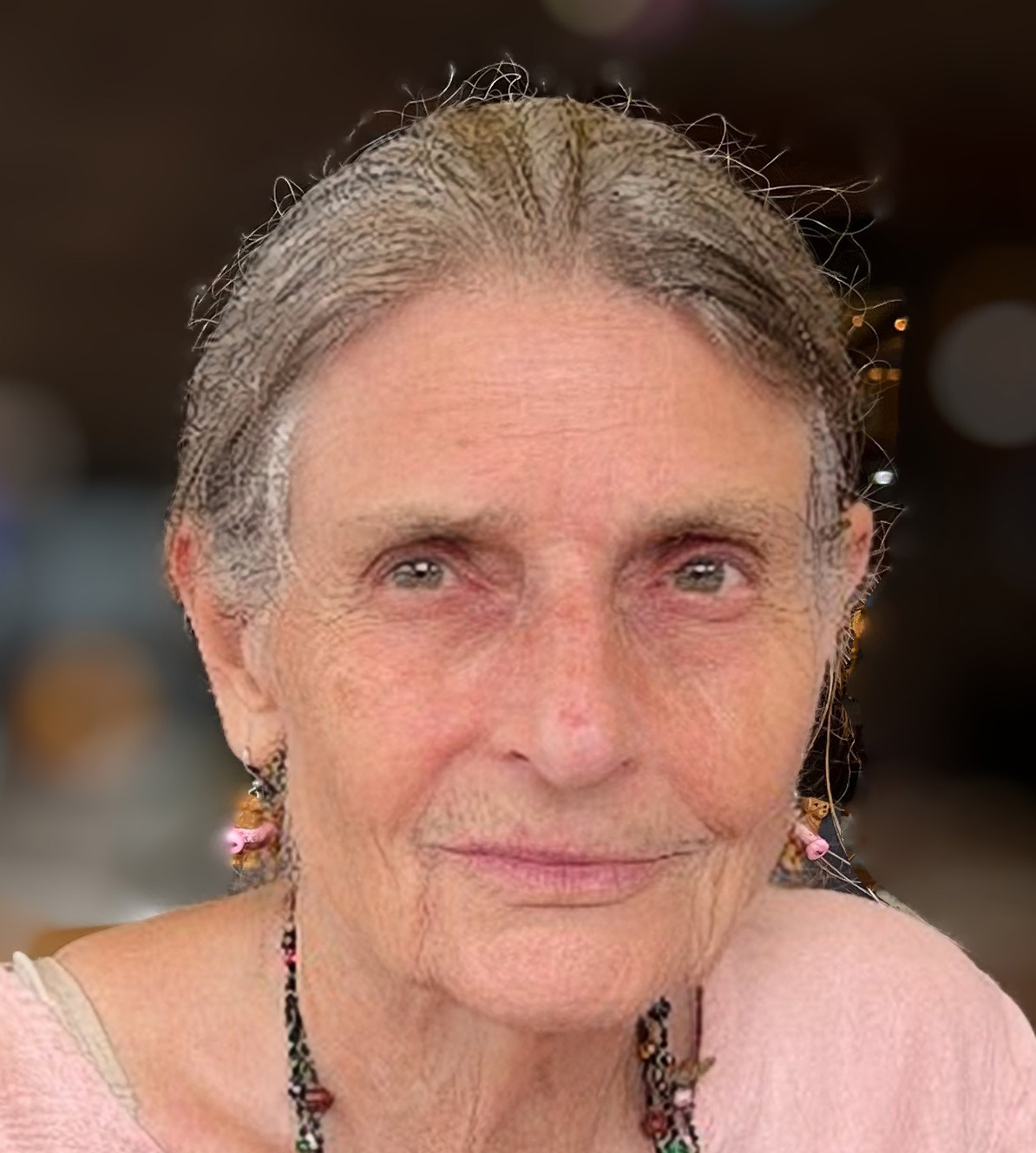
Kathleen Meigs is a thirteenth generation American and walked precincts for John Kennedy for president in 1960.
She matriculated at Stanford University, graduated from UCLA in history and has been a journalist, editor, and published academic author.
Her anthropological novel Mishopshno is available on Amazon. Her love is research, and her passion is truth and good government.
Kathleen can be reached at katymeigs@sbcglobal.net.


